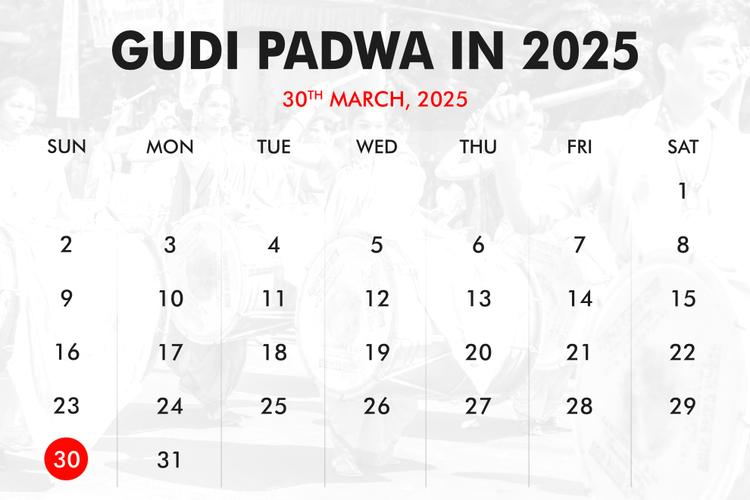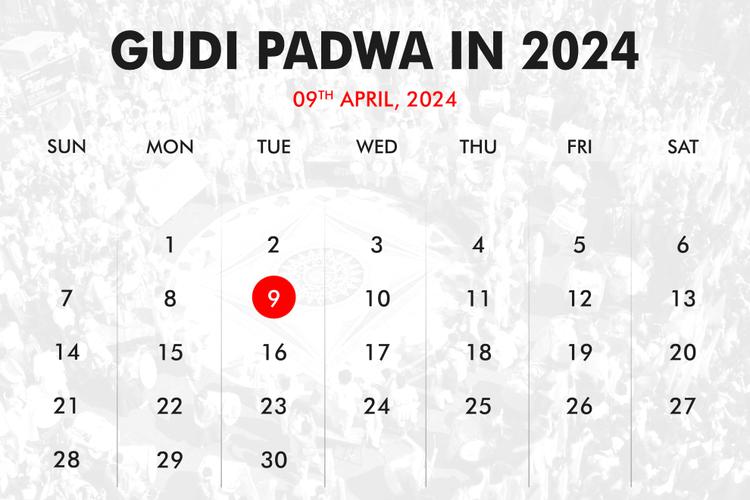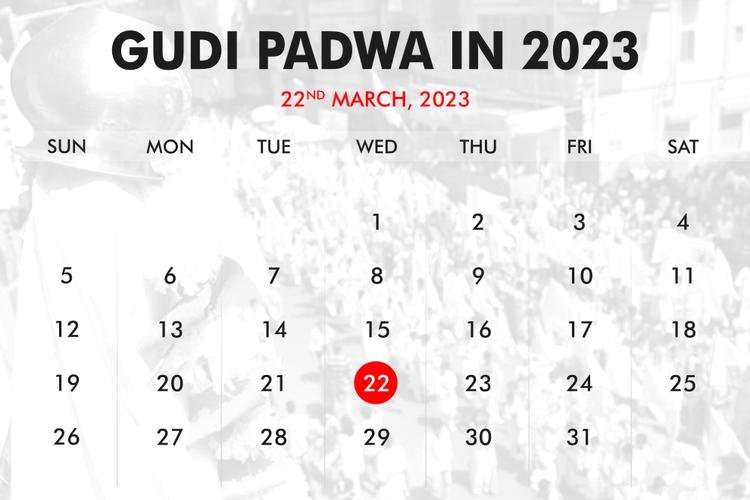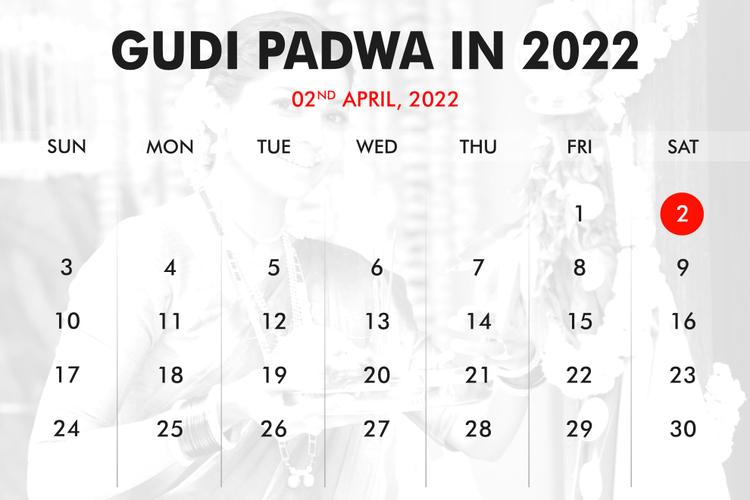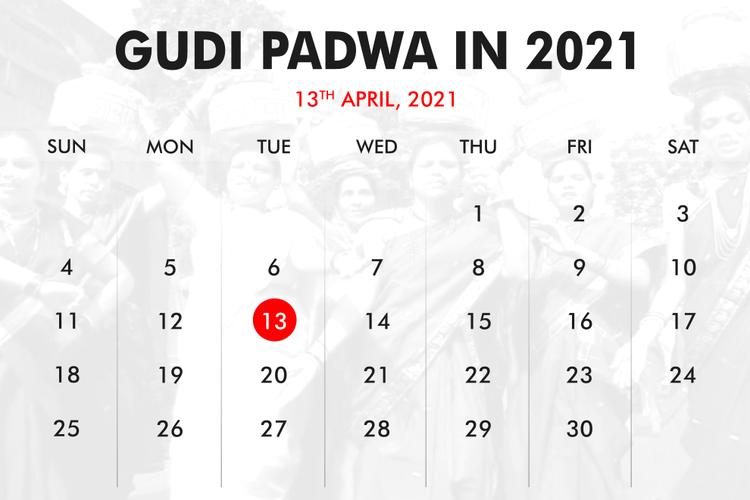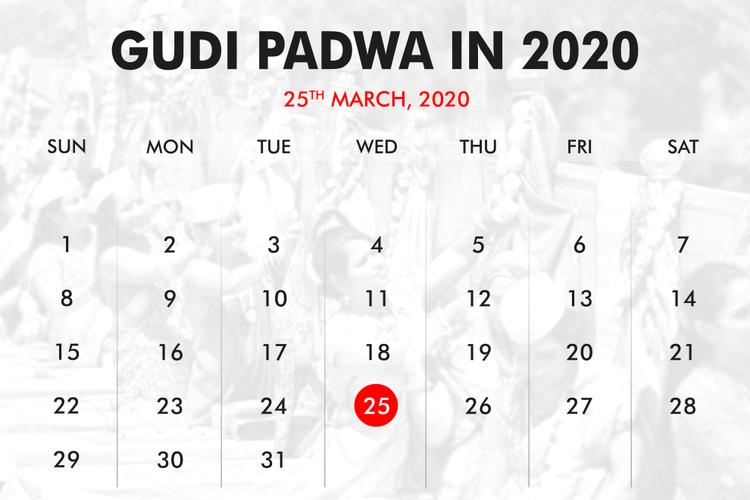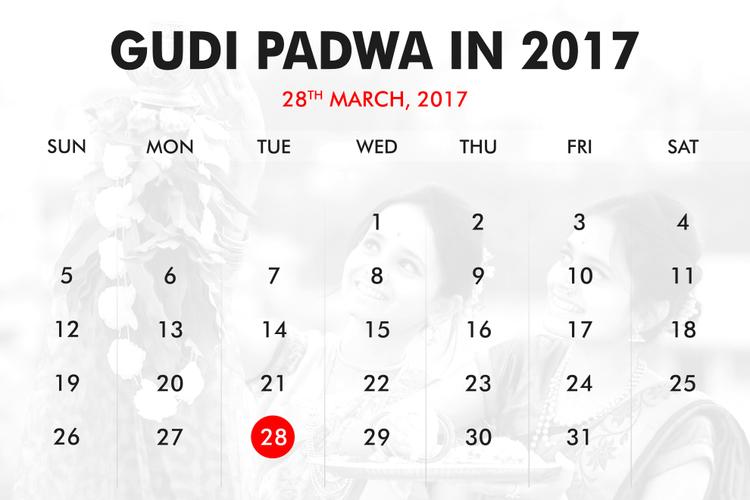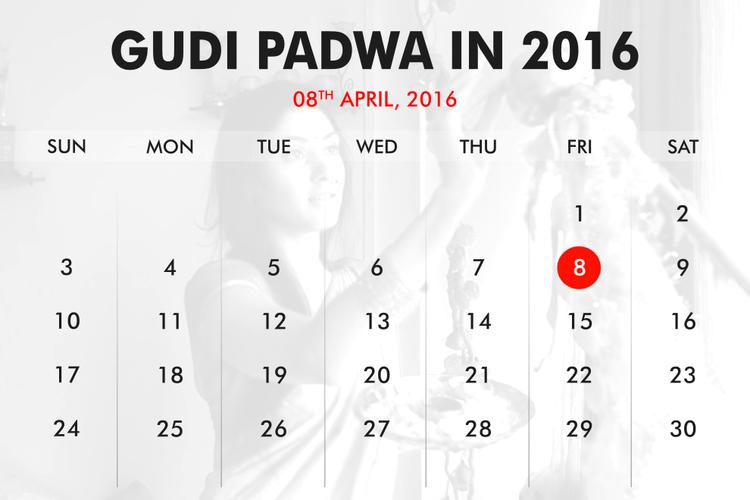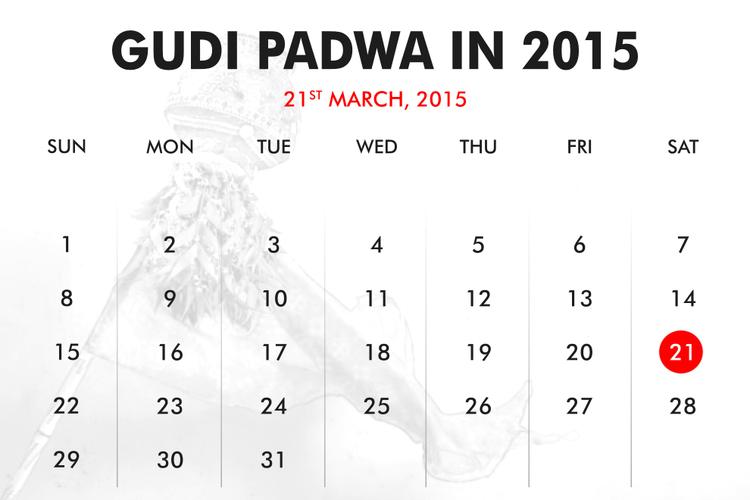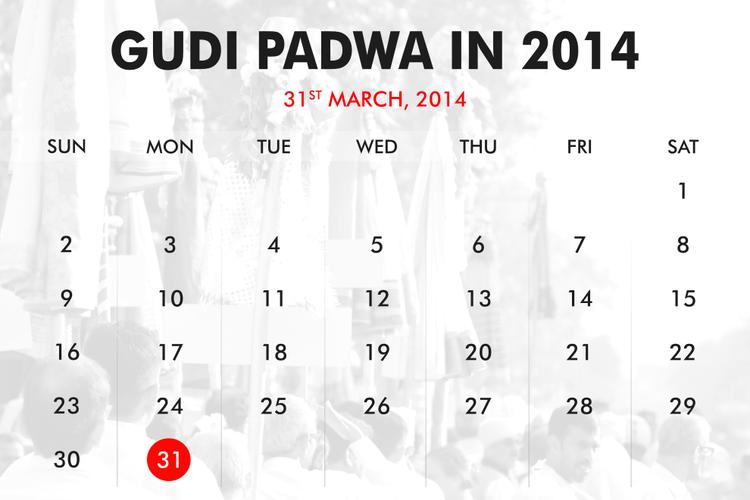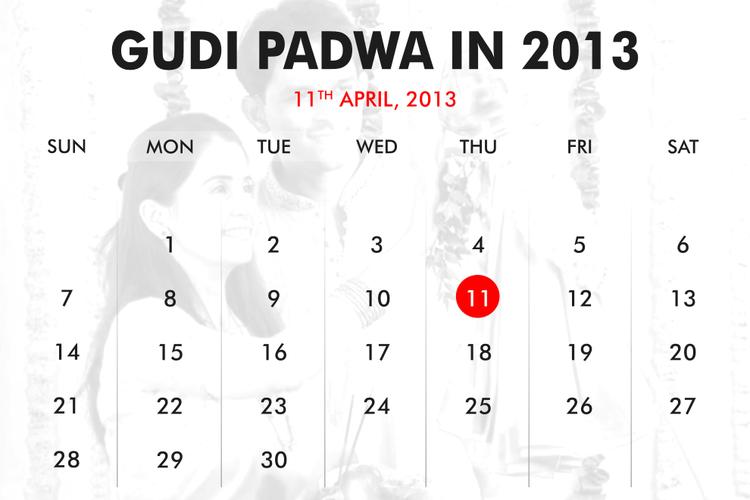When was Gudi Padwa in 2025?
Gudi Padwa in 2025 was on the 30th of March, Sunday.
The festival of Gudi Padwa is celebrated with a lot of glamour and pomp in different parts of the country. The people in the village follow their own set of rituals and take part in the festivities. You can go through this article to know when was this festival celebrated in previous years. Read for more.
Gudi Padwa is celebrated predominantly in Maharashtra, marking the traditional New Year as per the lunisolar calendar. It generally falls on the first day of Chaitra month, usually in March or April. This festival is all about prosperity, new beginnings, and the victory of good over evil. According to the rituals and traditions, the families clean and decorate their homes, prepare special sweets like puran poli, and seek blessings for a prosperous year ahead.
Gudi Padwa is an important festival that is celebrated in the states of Maharashtra and Konkon region. It has a lot of significance in the lives of Maharashtrian Hindus as they celebrate this day as their New Year. It is a happy and joyous festival and it is celebrated in different states of the country. New vibrant clothes are worn and certain rituals are followed by the people of the states. It is celebrated on the first day of the Chaitra month which generally falls during the month of March-April.
The Maharashtrian festival Gudi Padwa, also known as Samvastar Padyo, is an auspicious occasion celebrated on the first day of Chaitra month of the Hindu calendar. This year it will be celebrated on April 2, Saturday. This festival signifies the arrival of spring and coincides with the beginning of the New Year for Marathi and Konkani Hindus, especially famous in parts of Maharashtra, Karnataka, Andhra Pradesh, and Telangana. With vibrant adornments, Gudi Padwa witnesses dancing, street processions, and tasty festival delicacies.
The festival of Gudi Padwa is easily recognized with the celebrations surrounding a flag on a pole. Native to Maharashtra and Goa, Gudi Padwa is the new year day according to the regional calendar. People celebrate this festival befitting the status of a new year, with much admiration. A new year means a new beginning and hopeful aspirations filled with optimism. Gudi Padwa stands to honor these sentiments and re-assert faith in the way of life. Gudi Padwa traditionally celebrates the reaping of rabi, one of the major crops of Maharastra. Religiously, it commemorates the defeat of Raavan at the hands of Lord Ram. The most striking aspect of the celebration is a “gudi”. It is a silk scarf at the end of a bamboo pole that is hoisted like a flag.
Gudi Padwa or Samvatsar Padvo is celebrated as the first day of the year by Maharashtrians and Konkanis. On this day new Samvatsara, which is a cycle of sixty years, starts. All sixty Samvatsara are identified by their unique names. This festival holds a special place for all Maharashtrians and Konkanis and is also one of the biggest celebrations in the region. The festival of Gudi Padwa is made special with the age-old traditions which have stood the test of time. It is a time to bring people together and step into the new year. The rituals and customs usher in positive energy and renew the hope for a successful year ahead.
The auspicious festival of Gudi Padwa is also known as Sanvsar Padvo in Konkani. This festival is celebrated in the spring to welcome the Marathi-Konkani Hindu new year. On this day people erect flags on tall bamboo which are decorated with red flowers and mango leaves. An inverted pot made of silver or copper is placed on top of the bamboo. This flag is considered to be a symbolic representation of Lord Brahma’s Flag that he had hoisted to announce Lord Ram’s victory over the Asura King Ravana. Gudi Padwa is a day that is believed to celebrate the loving relationship shared by a husband and wife. Hence, newlyweds are invited for a special meal on this day.
On Gudi Padwa, the houses are cleaned spectacularly and beautiful rangolis are made at its entrance. It is traditionally essential to consume neem leaves on this occasion. This festival a decorated stick with a pot on top of it is placed outside the house. Sweet dishes like shrikhand, puran poli, and kannagachi kheer are prepared on the occasion of Gudi Padwa. Tying of green mango leaves is customary on the occasion of Ugadi, especially at the entrances. A puja is also performed in order to beseech the heavenly entities for a prosperous and productive new year. Gudi Padwa is observed on the Chaitra Shukla Pratipada which is based on the Hindu lunisolar calendar.
Gudi Padwa is celebrated mainly in Maharashtra, Goa, and parts of Karnataka. The most important event in this festival is the hoisting of Gudi on bamboo sticks ( victory flags) in front of their homes. There are numerous reasons for observing Gudi Padwa. The most important legends are the defeat of Shakas by Shaliavahan and some people observe it to commemorate the victories of Chhatrapati Shivaji Maharaj on this day. Offerings made of jaggery, neem leaves, and neem flowers are made throughout the day. It is considered a very auspicious day and farmers make it a point to plow the field on that day to ensure a good harvest. Gudi Padwa marks the beginning of the New Year for the people of the Konkan region of India. It falls on a different day every year depending on the Hindu Lunisolar Saka Calendar. This calendar begins with the month of Chaitra ( March-April) and Gudi Padwa marks the first day of the year. It falls on the Chaitra Suddha Paadyami or the first day of the bright half of the lunar phase in the Indian month of Chaitra.
The occasion of Gudi Padwa is generally observed according to the Hindu Calendar in the month of March or April every year. Gudi Padwa is one of the most auspicious and holy occasions for Marathi Hindus in India. It is basically celebrated by the Maharashtrians and Konkanis in the Deccan region of the country that comprises several areas of Maharashtra, Andhra Pradesh, Karnataka, and Kerala. There are various reasons why people celebrate Gudi Padwa. However, the most prominent one is that this auspicious day is marked as the New Year in Marathi Hindu Calendar. Many followers also observe this day to celebrate the defeat of Sakas by Shalivahan. Few celebrate this day for the victory of Chhatrapati Shivaji Maharaj. In short, there are numerous reasons why this day is celebrated, but whatever the reason, this day holds great importance in the culture and tradition of this region.
India is predominantly an agrarian society where celebrations and festivals are often related to the turn of the season and to the sowing and reaping of crops. Gudi Padwa which is celebrated at the end of the Ravi season marks the beginning of the new year. Observed in the state of Maharashtra and by all the Marathis all over the world, it also commemorates the victory of Marathi King Shalivahana over Sakas. Gudi Padwa is celebrated on the first day of the month of Chaitra known as Pratipada according to the lunar month. On a festive day, people clean their houses and decorate it with traditional designs and rangolis. On Gudi Padwa, a large gudi (Stick) is exhibited through the right side of the main entrance of the house. It is decorated with mango and neem leaves with a garland of red flowers. A silver or copper pot is placed in an inverted position over it. This Gudi symbolizes victory, righteousness, and happiness. On this auspicious occasion, everyone dresses up in their new clothes while the woman of the family cooks traditional dishes. A paste of neem leaves along with jaggery is consumed on this day. It is believed that it purifies the blood and strengthens the immune system.
India is known for its colorful festivals and occasion celebrated with much enthusiasm. Different states have different special events to celebrate. Gudi Padwa, the New Year of Maharashtrians and Hindu Konkanis in India are celebrated in the month of March-April with pomp and show. By wearing new clothes, decorating their houses with colorful ‘rangoli’ patterns, worshipping Gods and Goddesses, and exchanging sweets and gifts, people celebrate the first day of the Chaitra month. According to Brahma Purana, Gudi Padwa is the time when Lord Brahma created the world after the great flood. As per the Indian Lunar calendar "Sade-Teen Muhurt", every moment is considered to be auspicious to start a new venture. To make the festival grand, lip-smacking recipes to try out at home and prepare delicious dishes during the festival, impressive gifts personalized ones are sent to loved ones, and more.
Gudi Padwa is celebrated on Chaitra Sukhla Padyami, the first day of the Hindu calendar. Gudi Pawda is indeed one of the most auspicious days of the year when people can initiate new ventures with new expectations, growth, and vitality. As mythology goes, it is believed that Lord Brahma created the World on this special day. A ‘gudi’ or banner is the central part of the festival at home. The ‘gudi‘ banner is elevated with silk cloth and a metal pot that has a swastika symbol adorned on it. Maharashtrians consider this as a symbol of valor and confidence that is reminiscent of the homecoming of Lord Rama after slaying the demon King Ravana. They also take this as an opportunity to honor their leader Chhatrapati Shivaji, the Maharashtrian leader known for his tenacity and prowess. The ‘gudi’ or the bamboo pole that is erected upside down, is thus, said to ward off evil and invite prosperity, good luck, and happiness in the life of man. On this festive day, villagers clean their courtyards by plastering them with fresh cow dung.
